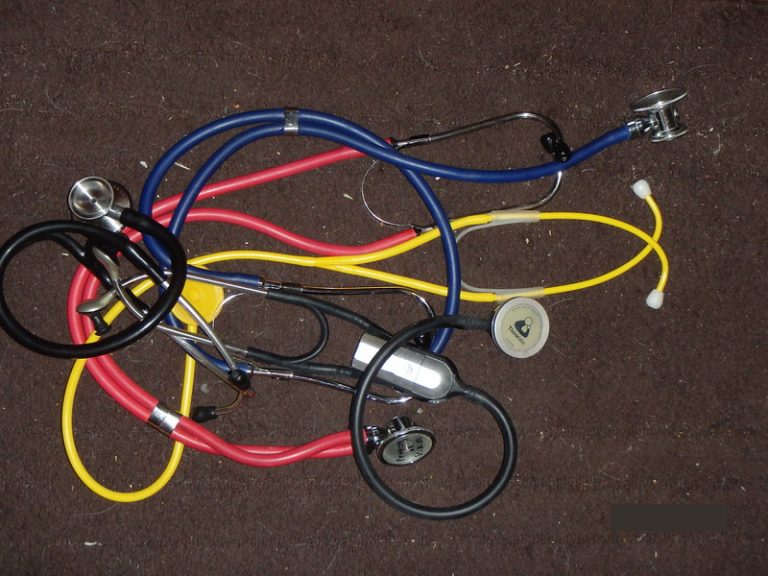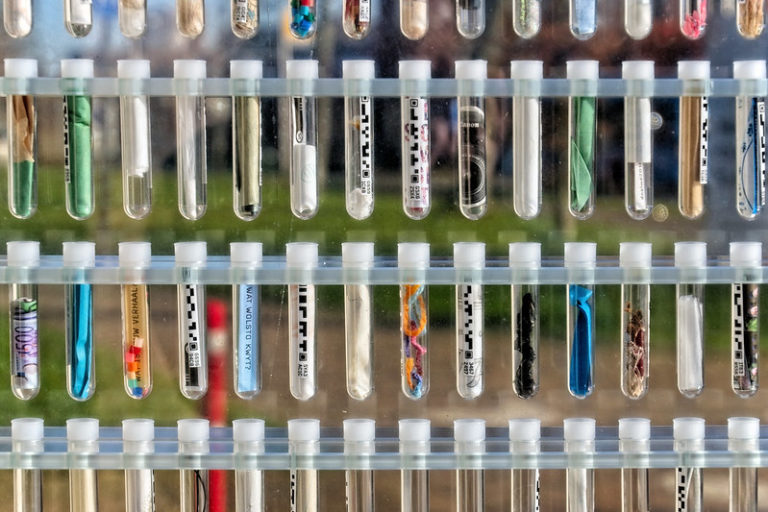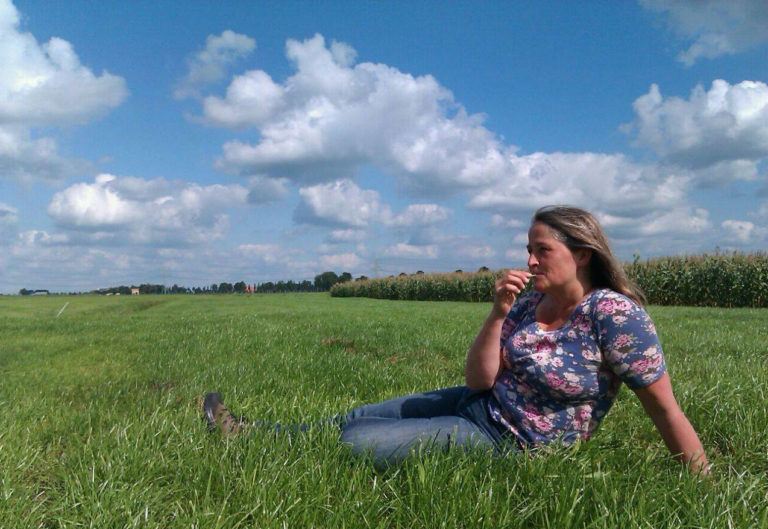News
The breeders’ gene pool: a semantic trap?
If the European Union were to decide to deregulate GMOs by adopting the text proposed by the European Commission, it would be adopting a legislation that is highly favorable to multinationals. To achieve this objective, the European Commission uses a specialist scientific vocabulary whose meaning is bound to evolve over time. A concrete example that Inf’OGM analyzes here is the notion of “breeder’s gene pool”. It’s a fuzzy notion that’s hard to pin down in law!

Does the European Commission master all the scientific jargon used in its proposed deregulation of GMOs? Are the multinationals trying to take advantage of the complexity of the scientific concepts involved to get more than they bargain for? The European legislator, whether a Member State government or an MEP, is, like most citizens, unaware of the meaning of the scientific concepts used by the European Commission in its writings.
What definition for « cisgenesis » and « transgenesis » ?
To be taken literally the European Commission’s proposed regulation, “a genetically modified plant obtained by targeted mutagenesis or cisgenesis, or a combination thereof, on the condition that it does not contain any genetic material originating from outside the breeders’ gene pool” would no longer be a GMO but a New Genomic Technique (NGT) product1. As such, it could be deregulated if it were found to meet certain criteria enabling it to be declared as NGT Category 1 and thus “considered equivalent to a conventional plant”. The proposed criteria are formulated in complex scientific terms.
Among these criteria, we know that the number of substitutions of the chemical elements making up DNA likely to justify classification as category 1 is infinite, and not 20 as the Commission tried to make those who read its text too quickly believe2. But these criteria also include genetic modifications aimed at inserting genetic sequences into a genome. This is transgenesis if the genetic sequence inserted into a plant comes from a bacterium, for example, an interregnum transfer. If a sequence is inserted into a plant’s genome from a plant with which it naturally crosses, we speak of cisgenesis. At least, that’s how the two terms have been understood until now, without any scientific or legal definition. While the European Commission does not propose a formal definition of transgenesis via an article in the regulation, it does suggest one in the recitals. Transgenesis would be a technique of genetic modification aimed at “inserting genetic material from non-crossable species (transgenesis)”3. Conversely, cisgenesis is the subject of a concrete definition proposal in an article. It would be a technique “of genetic modification resulting in the insertion, in the genome of an organism, of genetic material already present in the breeders’ gene pool”4.
Breeders’ gene pool : a central but vague notion
The expression “breeders’ gene pool” is absent from all the legislativ texts currently in force in the European Union regulating GMOs. However, in its July 2023 proposal to Member States to deregulate GMOs, the European Commission gives it a central place. According to the proposed text, it would be “the total genetic information available in one species and other taxonomic species with which it can be cross-bred, including by using advanced techniques such as embryo rescue, induced polyploidy and bridge crosses”5.
Drafted in this way, this definition is vague, as pointed out by the French expert committee of Anses (Agence nationale de sécurité sanitaire de l’alimentation, de l’environnement et du travail)6.
Is it all the genetic information on Earth? All the genetic information contained in a plant? A species? Depending on how this definition is understood, its scope may vary. The French experts who examined this question had to carry out a bibliographical study to give their understanding. A European expert opinion published in 2012 by the EFSA (European Food Safety Authority) gave them a key to their reading7. On this basis, the French experts concluded that it would be “genetic material originating from the whole of the genomes of plants with which the plant in question may cross, whether naturally or by means of more or less advanced conventional breeding techniques, outside the scope of Directive 2001/18/EC”. Whatever is the reading of the French experts, who reduce genetic information (the definition of which is not the subject of any scientific consensus) to its material support alone, it is important to focus on the definition proposed by the Commission, as vague it may be. This is the only definition that will be the law if the regulation is adopted!
At the crossroads of the legal and the scientific
The definition starts with “one species and other taxonomic species”. A taxon is a group of organisms with a common set of characteristics. It can therefore be a lineage, a variety, a subspecies, a species, a genus belonging to a tribe, a family…8 On a purely semantic level, the definition proposed by the European Commission refers to crossbreeding between species. Nowhere does it specify that these species must be able to interbreed naturally (otherwise, they would belong to the same species in its original definition!), but that they can be interbred, i.e. as a result of human action. Strictly according to the European Commission, it is sufficient to say that, for example, it is theoretically possible to cross a rice plant with a maize plant by means of “advanced techniques” (other than techniques producing GMOs according to 2001/18) for a maize plant in which a rice genetic sequence is inserted to be a category 1 NGT plant. Such a cross does not necessarily need to have been obtained and verified. When it states that the species concerned “may be crossed”, the Commission is only asking that this crossing be possible, without specifying what criteria are used to decide whether this is possible.
This understanding is important, as crosses between species can also involve plants with the same common name or even Latin name. There are several species of wheat, several species of maize, rice, cotton… Not all maize, for example, crosses naturally9. However, through “advanced techniques”, such as the one aiming at “saving” embryos obtained in a somewhat forced manner for example, offspring plants resulting from interspecies crosses that do not occur naturally can be obtained. Similarly, if two plant species A and B cannot cross with each other but can each cross with C, then species C can be used as a “bridge” species. A bridge can therefore be created between two plants, but it can also be two bridges, three bridges… ten bridges. On the Commission’s paper, as we saw above, nothing limits the number of possible bridges.
A broader range of techniques to come
The list of “advanced techniques” provided is an open one, and therefore not legally closed to any “improved” or future techniques. The techniques given as examples are not new. But the trick of having an open list is that if new techniques, unknown today, appear tomorrow and make it possible to force crossbreeding between organisms, these organisms will belong… to the breeders’ genetic pool. Let’s imagine that it becomes possible in the laboratory to force the crossing of a wild strawberry from the undergrowth with hybrid corn cells marketed in the USA by successive use of intermediate species acting as “bridges”: the plants obtained will be GMOs/NGTs of category 1 because they are “equivalent to a conventional plant”!
This very notion of enlarging the list of “advanced techniques” to build up the breeders’ genetic pool is a reality acknowledged by the European experts themselves. In 2012, in their opinion already referred to by the French experts, they wrote that “breeders are continually expanding the […] gene pool and will continue to do so in the future”.
A copy-paste from the United States of Amercia?
On the other side of the Atlantic, in the United States of America, the same deregulation of GMOs, depriving citizens of any information or depriving the sector of any ability to segregate, was put in place in 2020. In the text adopted in the United States, the scope of the breeders’ genetic pool is as broad as the European Commission’s proposal. Thus, this genetic pool is defined as “Germplasm within which sexual recombination is possible as a result of hybridization, including via methods such as embryo culture or bridging crosses (§ 340.3).”10. The term germplasm is itself defined as “the cells or tissues from which a new organism can be generated”11. The Commission’s genetic pool thus appears as vague in its definition as that of the United States.
But there are two differences.
The first is a clarification made by the United States, which makes their legislation less unambiguous than the European Commission’s proposal. Thus, when US legislation refers to the genetic pool, it specifically mentions “the plant’s genetic pool”12.
The second difference is a further clarification in the footnote to the US legislation. Discussions prior to the adoption of the new rules in this country obviously led to the need of an important clarification. US policy states that “Transgenes from previously reviewed […] combinations that have been determined not to be regulated are not considered part of the plant’s gene pool.”13. This US clarification raises the question of the scope of the definition proposed by the European Commission. Will the transgenes present in certain GMOs already commercially authorized in Europe be part of the breeders’ genetic pool? At first sight, this does not seem possible, since the definition provided for this pool limits its scope to plant genetic information, which is often not the case for accessory genetic material indispensable for transgene expression (promotor, terminator…). But will multinationals and the European Commission, which is already unaware of this for cisgenesis, say the same in a few years’ time if this proposal were to be adopted as an EU regulation? In any case, such a clarification appeared necessary in the United States.
- European Commission, “Proposal for a regulation of the European Parliament and of the Council on plants obtained by certain new genomic techniques and their food and feed, and amending Regulation (EU) 2017/625”, July 5, 2023. ↩︎
- Eric MEUNIER, « Scientific manipulations, a basis of the future GMO/NGT law? », Inf’OGM, 29 November 2023. ↩︎
- Recital 2 of the EC proposal. See note 1. ↩︎
- Article 3.5 of the EC proposal. See note 1. ↩︎
- Ibid. ↩︎
- Anses, “AVIS de l’Anses relatif à l’analyse scientifique de l’annexe I de la proposition de règlement de la Commission européenne du 5 juillet 2023 relative aux nouvelles techniques génomiques (NTG) – Examen des critères d’équivalence proposés pour définir les plantes NTG de catégorie 1”, December 2023. ↩︎
- EFSA, “Scientific opinion addressing the safety assessment of plants developed through cisgenesis and intragenesis”, 2012. ↩︎
- Ministère de la culture, “France terme: taxon (Journal officiel du 04/02/2010)”, accessed December 2023. ↩︎
- Lu Y. et al., “Insights into the molecular control of cross-incompatibility in Zea mays”, Plant Reprod 33, p.117-128, 31 août 2020. ↩︎
- USDA, “Guide for Requesting a Confirmation of Exemption from Regulation under 7 CFR part 340”, page 3, August 31, 2022. ↩︎
- USDA, “NAL Agricultural Thesaurus: germplasm”, May 15, 2018 (accessed December 2023). ↩︎
- USDA-APHIS Biotechnology Regulatory Services, USDA-APHIS Biotechnology Regulatory Services, “Guide for Requesting a Confirmation of Exemption from Regulation under 7 CFR part 340”, page 4, August 31, 2022. ↩︎
- Ibid. ↩︎













